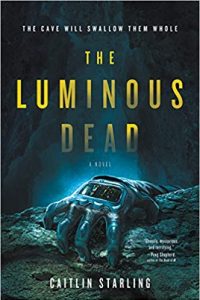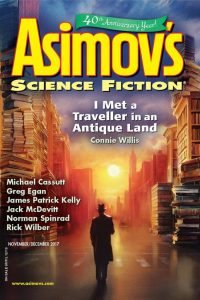Faren Miller reviews Melanie Rawn
In Touchstone, Melanie Rawn chronicles the formation and wayward path to success of the title group of players, whose form of theater could only exist in a world where the creatures of our fairytale and fantasy have survived to become part of human life and culture in a land that resembles an 18th-century England – from a very alternate world history where humans aren’t the only sentients, religions took different courses, and magic has survived despite centuries of intolerance and violence.
Rawn’s characters come from an era when most ‘‘races’’ (belonging to the classical divisions Water, Fire, Earth, and Air) have mingled, to the point where Cayden, the first viewpoint character, calls himself a ‘‘mongrel’’ mixture of Wizard, Elf, Piksey, Sprite, plain human, and that rare blood Fae, plus a regrettable bit of Troll, ‘‘because where else could he have got a face like this? Hook-beak nose and long jaw, cheekbones that could cut glass, wide mouth….’’ So even though his gray eyes are elfin, lanky body wizardly, and ‘‘straight white teeth’’ the better part of human, Cayden (Cade) knows he’s ugly.
At least he’s a ‘‘tregetour,’’ which the concluding List of Terms defines as ‘‘originally a street magician, evolved into the word for a playwright’’ and he calls ‘‘a crafter of words, a designer of specific magics.’’ Cade works from behind the scenes while others play out dramas he has adapted from old tales, with the equivalent of scenery and special effects provided by specially adapted ‘‘twigs’’ of variously colored, bespelled glass. (For a flamboyant version of one scene, check out the book’s cover.) The shifting members of his foursome – the others known as ‘‘masqueur,’’ ‘‘fettler,’’ and ‘‘glisker’’ – won’t succeed onstage until they find a kind of catalyst in the elf Mieka, whose prodigious talent as a glisker has so few flaws he could pass for a pureblood.
Touchstone’s growing popularity also depends on a person they can’t acknowledge in a thoroughly sexist society: Cade’s longtime friend and neighbor the glass-maker Blye, who happens to be female, though women aren’t officially permitted into performances even as spectators. While some do sneak in to watch, disguised as men, Blye is more active, imbuing her own magics in the group’s ‘‘twigs.’’ But she keeps a low profile in the studio established by her glass-making father.
Another thing that sets the group apart and heightens the general tension comes from Cade’s troubling visions, where both dreams and waking ‘‘turns’’ reveal potential futures – some of which he’d do anything to avoid. When the focus passes to Mieka, it reveals further complications in both elvishness and the art of glisking. (As a final note reveals, Rawn ‘‘stole’’ some of her language from genuine outmoded words, and she effectively conveys her delight in them.)
Up to this point, I’ve been talking mostly about story, and an imaginatively detailed yet never overdrawn fantasy background. But what impressed me most about Touchstone proved to be its unexpected sense of realism. These are the personal adventures of brash, foulmouthed young people, where maturation is still a work in progress. Professional or moral failures could lie ahead – for their best and brightest? – yet hope lingers, while they find their own strange way to success.
I’m glad to learn that Rawn plans to keep the project going. Told from this intimate perspective, any further chronicles of Touchstone should fall into a kind of middle ground between High Fantasy and Low, a place where sequels can be something other than the relentless breeding-ground for epics or the playground of light comedy.








